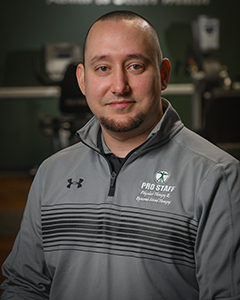Why You Need Physical Therapy After an ACL Surgery

Did you know that over 250,000 people in the United States suffer an annual ACL tear? The anterior cruciate ligament (ACL) is a cruciate ligament in the knee that provides stability and helps control the forward and rotational movements of the knee joint. Located in the center of the knee, the ACL can be prone to injury, especially in high-demand physical activities such as sports. This article will discuss the importance of choosing physical therapy after ACL surgery for a successful recovery.
Why Would You Need ACL Surgery?
ACL (anterior cruciate ligament) surgery may be necessary for various situations, both for athletes and non-athletes. Some common symptoms/signs that may indicate the need for ACL surgery include:
- Knee instability: One of the main signs that someone may need ACL surgery is experiencing recurrent episodes of knee instability. This can manifest as the knee “giving way” or feeling unstable during activities such as walking, running, or changing direction. It can also be accompanied by pain, swelling, and a feeling of the knee “buckling” or not supporting weight properly.
- Severe pain and swelling: ACL tears often result in significant pain and swelling in the knee joint. Suppose conservative treatments such as rest, ice, compression, and elevation (RICE) are ineffective in reducing pain and swelling, and the knee remains painful and swollen. In that case, it may indicate a more severe injury that requires surgical intervention.
- Limitation in daily activities: If an ACL tear significantly impairs a person’s ability to perform daily activities such as walking, climbing stairs, or participating in recreational activities, it may indicate the need for ACL surgery to restore normal knee function.
- Participation in high-demand physical activities: Athletes who participate in high-demand sports such as soccer, basketball, football, and skiing are at increased risk of ACL tears due to their activities involving pivoting, cutting, and jumping. If an athlete sustains an ACL tear and wishes to continue participating in their sport, ACL surgery may be recommended to restore knee stability and function.
- Multiple ligament injuries: In some cases, an ACL tear may be accompanied by injuries to other ligaments in the knee, such as the medial collateral ligament (MCL) or posterior cruciate ligament (PCL). If multiple ligaments are injured, surgical intervention may be necessary to restore stability to the knee joint and prevent long-term complications.
- Desire to return to pre-injury activity: For active individuals who want to return to their pre-injury activity level, ACL surgery may be recommended to optimize the chances of a successful recovery and enable a safe return to sports or other physical activities.
Conservative treatment options such as physical therapy and bracing may be appropriate in some cases, especially for individuals who are not as physically active or have lower functional demands.
How Can You Recover after an ACL Surgery
Recovering from ACL (anterior cruciate ligament) surgery requires a comprehensive approach that includes rehabilitation, physical therapy (PT), and a gradual return to normal activities. Here are some tips on how to recover after ACL surgery, with a particular emphasis on the important role of PT:
- Follow post-operative instructions: It’s crucial to follow the post-operative instructions provided by your therapists carefully.
- Begin physical therapy early: Physical therapists will design a customized rehabilitation program to help restore knee strength, range of motion, stability, and functional mobility.
- Gradual progression of activities: It’s important to follow a gradual progression of activities as guided by your physical therapist, including gradually increasing weight-bearing, range of motion exercises, and functional exercises.
- Strengthening exercises: Your physical therapist will design a program that focuses on strengthening the muscles around the knee, including the quadriceps, hamstrings, and hip muscles, to provide stability and support to the knee joint.
- Balance and proprioception training: ACL injuries can disrupt the body’s ability to sense joint position and balance (proprioception).
- Return to sports/activity clearance: Athletes should only rush to return to sports or other high-impact activities with proper clearance from their healthcare team. It’s important to wait until you have regained adequate strength, stability, and functional mobility and have received approval from your therapists before returning to sports or other demanding activities.
Working closely with your therapists is crucial to achieving the best possible outcomes and safely returning to normal activities, including sports or daily life activities, after ACL surgery.
Why Would You Need Physical Therapy after an ACL Surgery?
Physical therapy (PT) is crucial after ACL (anterior cruciate ligament) surgery as it helps patients regain strength, mobility, and stability of the knee joint and safely return to normal activities.
Some benefits of PT after ACL surgery includes:
- Restoring knee strength through exercises that target the muscles around the knee joint, providing stability and support to the knee.
- Improving range of motion by gradually restoring normal mobility and flexibility of the knee joint.
- Enhancing stability and proprioception through balance and proprioception exercises, reducing the risk of future injuries and improving overall joint function.
- Managing pain and swelling through ice therapy, manual therapy, and modalities like ultrasound or electrical stimulation.
- Facilitating a safe return to activities through a gradual progression of exercises and activities tailored to the patient’s needs and goals.
- Providing an individualized rehabilitation program that considers the patient’s overall health, age, activity level, and the specific surgical procedure performed.
When to Start Physical Therapy After an ACL Tear?
The timing for starting physical therapy (PT) after an ACL tear and surgery may vary depending on the surgeon’s recommendations, the individual patient’s condition, and the specific surgical procedure performed. In general, PT usually begins within a few days to a few weeks after ACL surgery, once the initial swelling and pain have subsided and the surgeon has given clearance for PT.
Here are some factors that may influence when PT is started after ACL surgery:
- Healing of surgical incisions
- Resolution of swelling
- Pain management
- Precautions based on surgical technique
- Overall health and readiness of the patient
- Surgeon’s recommendations
It is essential to follow the surgeon’s recommendations and work closely with the physical therapist to ensure that PT is initiated appropriately and progresses safely and effectively for the individual patient’s recovery.
How Will Physical Therapy Improve My ACL Recovery?
The role of physical therapy can be instrumental in helping athletes achieve optimal outcomes. Here are some ways PT can contribute to ACL recovery, incorporating sports-specific considerations:
-Reducing Pain and Swelling: Physical therapy can help reduce pain and swelling associated with ACL injuries. Physical therapists use various techniques such as massage, ice, and electrotherapy to alleviate pain and swelling, improving the healing process.
-Restoring Range of Motion and Strength: Physical therapy helps regain range of motion and strength through exercises that target the knee and surrounding muscles. Strengthening these muscles can help support the knee joint and reduce the risk of future injuries.
-Improving Balance and Coordination: Physical therapy may also include balance exercises that help to improve coordination and reduce the risk of re-injury. This is particularly important for athletes who must regain their strength and coordination to return safely to their sport.
-Promoting Healing and Preventing Scar Tissue: Physical therapy can help to improve blood flow to the affected area and promote healing of the ACL. It can also help prevent excess scar tissue from forming, limiting mobility in the knee joint.
Why Choose Pro Staff for Physical Therapy After an ACL Surgery?
Choosing Pro Staff for physical therapy after an ACL surgery can significantly benefit your recovery process. With their expertise in ACL recovery, Pro Staff PT’s can provide specialized care tailored to your needs, considering your sport, level of competition, and individual goals. They use customized rehabilitation programs incorporating sports-specific training and advanced techniques to optimize your recovery and help you safely return to sports activities.
Pro Staff PT’s also closely monitor your progress, assess your readiness to return to sports, and provide psychological support to help you overcome challenges during recovery. Call Pro Staff Physical Therapy today to schedule your ACL recovery appointment!
Pro Staff Institute, LLC, has a network of outpatient physical rehabilitation centers in New Jersey. Pro Staff was founded in 2010 by Frank Pavlisko and Michael Maffucci. Through Frank’s 25 plus years experience in Physical Therapy and Michael’s experience in Management Services, our goal is to exceed customer expectations by providing the highest quality of service in a fun, family, friendly, and encouraging environment.
PRO STAFF LOCATIONS
OFFERING CERTIFIED
HAND THERAPY
Managing Diabetes: The Role of Physical Therapy
Managing Diabetes: The Role of Physical Therapy As of 2024, approximately 38.4 million Americans, or 11.6% of the U.S. population, have diabetes. Of these, 29.7 million cases are diagnosed, while an estimated 8.7 [...]
Staying Active and Injury-Free During Summer Activities
Staying Active and Injury-Free During Summer Activities Summer is a fantastic time to engage in outdoor sports and physical activities. Whether playing soccer, tennis, cycling, or jogging in the park, staying active is [...]
The Importance of Posture: How Proper Alignment Can Prevent Pain and Injury
The Importance of Posture: How Proper Alignment Can Prevent Pain and Injury In today's fast-paced world, where many hours are spent over desks, smartphones, and computers, posture is often neglected. Poor posture can [...]




